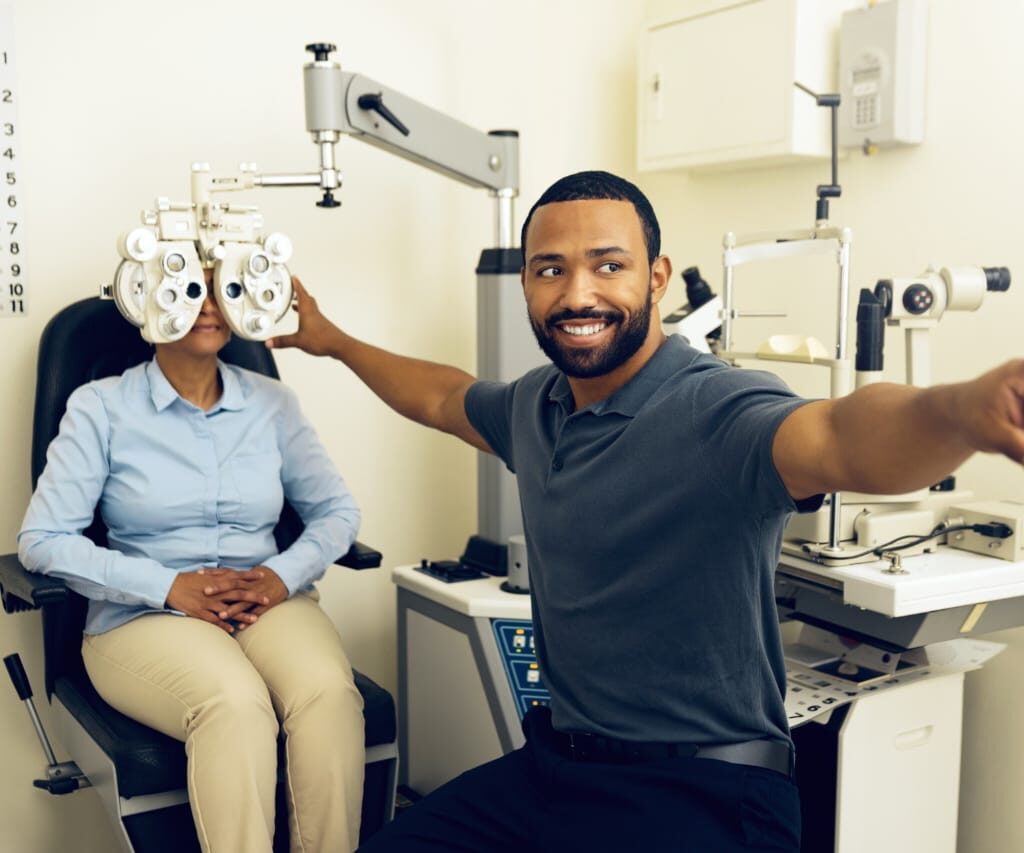Regular eye exams are essential for maintaining optimal vision and overall eye health. During these exams, various tests are conducted to assess your visual acuity and eye function. Understanding the results of these tests can help you gauge your eye health and determine whether you need corrective lenses or treatment for eye conditions. This article explores what constitutes a good score in common eye tests, focusing on visual acuity tests, which are a fundamental component of most eye exams.
Visual Acuity Test
The visual acuity test is the most well-known part of an eye exam, often involving a chart with letters that decrease in size, known as the Snellen chart. This test measures the sharpness or clarity of your vision at a distance.
1. Understanding the Snellen Chart: The Snellen chart displays rows of letters, which you are asked to read from a distance of 20 feet. Each row corresponds to a level of visual acuity.
2. The 20/20 Standard:
- What It Means: If you have 20/20 vision, it means you can see what a person with normal vision can see on the chart when they are 20 feet away. This is considered the standard for normal visual acuity.
- Scores Better Than 20/20: Scores like 20/15 or 20/10 indicate even sharper vision. A person with 20/15 vision can see at 20 feet what a person with normal vision sees at 15 feet.
- Scores Worse Than 20/20: Scores like 20/40 or 20/60 indicate that you see at 20 feet what a person with normal vision can see at 40 or 60 feet, respectively. The higher the second number, the poorer the visual acuity.
Other Common Eye Tests

1. Tonometry Test (Eye Pressure Test):
- Normal Eye Pressure: A reading of 12 to 22 mm Hg (millimeters of mercury) is generally considered normal. Higher readings might indicate a risk of glaucoma.
2. Perimetry Test (Visual Field Test):
- Normal Field of Vision: No significant loss of peripheral vision is considered normal. Abnormal results may suggest eye diseases such as glaucoma.
3. Color Vision Testing:
- Normal Color Vision: Being able to identify various colors correctly and discern color differences is considered normal.
Factors Influencing Eye Test Results
- Age: Visual acuity can naturally decrease with age.
- Health Conditions: Conditions like diabetes or neurological disorders can affect vision.
- Medications: Certain medications can impact visual acuity and eye pressure.
- Eye Fatigue: Excessive screen time and lack of sleep can temporarily affect your test scores.
When to Be Concerned
- Significant Changes: A notable decline in your usual scores, especially if it happens rapidly.
- Poor Scores: Significantly worse than 20/20 vision, like 20/40 or lower, may require corrective lenses.
- Symptoms of Eye Problems: Blurred vision, eye strain, headaches, and night vision difficulties should be evaluated by an eye care professional.
A good eye test score typically corresponds to 20/20 vision, which is considered optimal visual acuity without correction. Scores like 20/15 are even better, indicating sharper than average vision. However, scores below 20/20 may indicate the need for corrective lenses or further eye health evaluation. Regular eye exams are crucial for monitoring your vision and overall eye health, ensuring that any changes in your vision can be addressed promptly. If your vision test results raise concerns, consult with an eye care professional who can provide more specific guidance based on your individual health needs and lifestyle.



